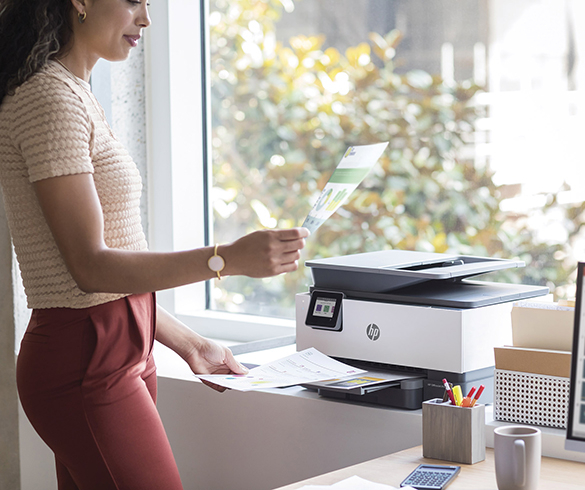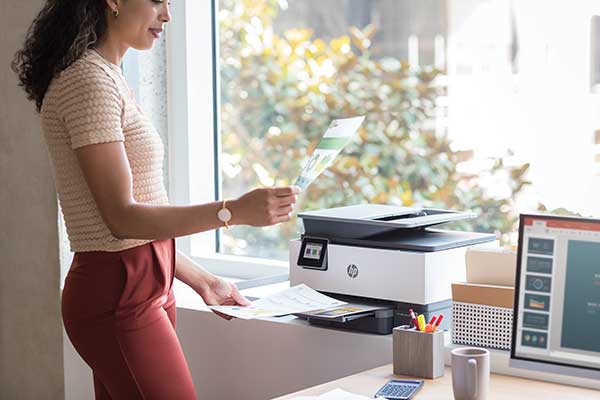
Create a Home Office that Works
Although a growing number of businesses are reopening their in-person office spaces, many are maintaining remote workforces or implementing hybrid schedules. While the shift signals steps toward more traditional, familiar work environments, it also presents some challenges.
If your temporary remote work schedule is headed for a more permanent status, or if you’ll be straddling both worlds indefinitely, it may be time to make some changes to ensure your home office is up to the task.
Do Your Research
Before making any significant purchases, do some digging to learn all you can about the devices and equipment you’re considering, especially if you’re planning to create an efficient setup using smart technology. While many devices work well together, that’s not always the case. You should also be aware of the controls and how you’ll manage smart functions; choose the setup that’s most intuitive for you and fits best with your workflow.
Identify Unique Requirements
A successful home office needs to reflect the needs of your particular job, so you may need special equipment or tools specific to your role. For example, 63% of desk-based workers said having to collaborate with colleagues virtually is either a challenge or major barrier to working remotely, with 24% saying it is a major barrier, according to a survey by HP. If your job typically relies heavily on collaboration, you’ll probably need a video conference setup.
Another common challenge: access to a printer. More than one-fourth of desk-based workers ranked having access to the office printer among the top three things they miss about the in-office experience.
If your home office isn’t already equipped with a printer or you need to upgrade, you may be wondering where to start. Convenience is more important than everything else in a home printer, according to survey participants. You may also agree with the 52% of remote workers who indicated that if they were considering buying a new home printer in the future, it must be easy to use, and a simple set-up process was a leading demand.
One convenient and simple option is the HP+ smart printing system, which is powered by a cloud-based ecosystem with enhanced security, productivity and sustainability features. Paired with an optional Instant Ink automated supplies replenishment subscription, an environmentally friendly solution to ensure you never run out of ink or toner, the system offers a perfect solution for hybrid workers and small businesses.
Start Small
 Establishing a well-equipped home office takes time and money. Identify the equipment and essentials you need to get started then create a wish list with other items you can add over time. As you’re setting priorities, remember it can pay to invest in quality products from the get-go. If you have to make repairs, or upgrade or replacement equipment, you may actually spend more in the long run.
Establishing a well-equipped home office takes time and money. Identify the equipment and essentials you need to get started then create a wish list with other items you can add over time. As you’re setting priorities, remember it can pay to invest in quality products from the get-go. If you have to make repairs, or upgrade or replacement equipment, you may actually spend more in the long run.
Get a Strong Network
At the office, you probably had an IT department responsible for keeping your network up and running. At home, you may still have some level of tech support, but your home connectivity is likely your own concern. A good network starts with a quality router. You’ll also want to shop for an internet provider with the best speeds at a rate you can afford. Just be conscious of any restrictions on volume or speed that could hinder your ability to do your job.
Keep Security in Mind
Smart devices collect a lot of information and because much of the technology is still so new, it’s relatively vulnerable to hackers. Get familiar with privacy settings on all your devices and adjust accordingly so you’re not divulging proprietary data or other information that could be used inappropriately.
Learn how to make your home office work for you at hp.com .
Tips for Finding the Right Printer
Features: A basic printer simply prints documents, but if you need to also copy, scan and fax, there are many all-in-one models that offer those capabilities, as well.
Inkjet vs. Laser: If you normally print text with few images, opt for a laser printer. If your work involves a lot of graphics and photos, an inkjet printer may be a better choice.
Supplies: Depending on how much you print, you may go through a lot of ink, and the cost can add up. Comparison shop to find the best ink prices, which brands offer features like recycling for used cartridges and whether you can access a subscription to ensure you never run out of ink or paper before a big deadline.
Cord Connections: Some printers require a wired connection to your computer while others can connect to your computer using Wi-Fi or an app like HP Smart App. Aside from personal preference, your decision may hinge on the space you have available.
Photo courtesy of Getty Images (Man in home office)
Source:
HP





























